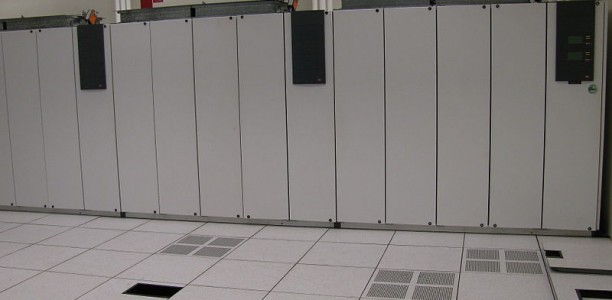Upsite Technologies recently contributed an article to Data Center Journal’s “Facilities” articles, written by experts in their fields. This piece, “Cooling What Remains: The CCF After Moving to the Cloud” was written by Upsite’s Senior Engineer, Lars Strong. From the article:

Every move to the cloud, whether from an original site or in the changed environment of a colocation facility, creates an opportunity to refine the configuration and control of the cooling infrastructure that supports what remains to maximize the energy savings. SaaS (software-as-a-service) platforms, storage capabilities, ease of cloud-based servers and bandwidth resources are driving IT virtualization and the popularity of cloud computing. Gartner estimates that SaaS sales were around $10 billion in 2010 and will more than double to approximately $21.3 billion by 2015. Though security and ownership concerns restrain immediate adoption rates, companies continue to move to the cloud. The 2013 Uptime Institute Data Center Survey stated that “global adoption of public cloud computing…is 28%.” This percentage initially appears small. Among enterprise public-cloud adoption in 2013, though, end-user demand grew compared with 2012, going from 13% to 43%. The industry can expect to see numbers continue to increase in 2014. As a result, the importance of computer-room operations seems to fade behind this growing trend toward cloud computing. Moving to the cloud provides many benefits for companies, from increasing the ability to manage big data to decreasing the need for power and cooling capacity of their physical infrastructure.
Moving to the cloud reduces the IT load in the computer room. Virtualization also reduces the overall load, but what remains is more condensed. Both of these changes create an opportunity to right-size the cooling infrastructure in the computer room. Previous airflow management (AFM) practices should be reevaluated. Also, the remaining physical infrastructure that supports this new environment, whether cloud based or virtualized, should be optimized even further to handle higher densities and load relocation.
Often the opportunity for cost savings that can be realized from changes to the cooling infrastructure are overlooked. Although the cooling-unit thermostats sense the reduction in load, the cooling-unit fans often continue to run at full speed. Also, perforated-tile placement may need adjustment. Right-sizing these and other elements of the cooling infrastructure can produce substantial operating-cost reductions. Upsite Technologies’ cooling capacity factor (CCF) can indicate how much room is available for improvement. CCF is a metric Upsite developed to determine the utilization of the installed cooling infrastructure in the computer room. It compares the rated capacity relative to the IT heat load, providing a picture of cooling-infrastructure utilization. No matter what infrastructure remains owing to cloud-computing initiatives, CCF determines how well cooling is being used (discover your CCF through Upsite’s complimentary online calculator).
A cloud-based data center has larger load variations than the traditional computer room. High-performance computing server farms can also vary their power use depending upon when specific jobs are being run. Because of this total load variation, different server farms existing in the same space may be running at peak energy use at varying times. So as data centers increasingly move to the cloud and consolidate their computer rooms, the CCF of the room will change.
Hot spots are one of the first issues that can be addressed and are a well-known side effect of rising densities, but cold spots can also develop when computer-room cooling capacity is not right-sized. Other problems with PUE or balancing capacity with demand can be solved by evaluating infrastructure behind the cloud that is on site and by addressing efficiency from the ground up.
Upsite recommends optimizing a room’s thermal and airflow management at each of a facility’s four “R’s”: raised floor, racks, rows and room. To achieve optimal cooling efficiency and avoid stranded capacity, the first three components of a facility should be sealed in the order shown to create the best results and create an opportunity to make changes at the room level. Upsite has seen, in previous studies, sites that installed full containment (the third R—rows) only to limit many of its potential benefits owing to a lack of basic AFM solutions, including missing raised-floor grommets (first R—raised floor) and blanking panels (second R—racks). By methodically seizing the “low-hanging fruit” one “R” at a time, a facility can make improvements, monitor the results and repeat previous action as needed to properly manage airflow and gain the most benefits from all installed cooling solutions.
As discussed, going to the cloud or virtualizing servers reduces the total IT load in the room, creating an opportunity to right-size the infrastructure supporting what remains, release stranded capacity and reduce operating costs. Upsite suggests seizing this opportunity through the following process:
- Calculate the CCF
- Address the 4Rs in sequence
- Raised floor
- Rack
- Row
- Room
CCF is the place to start—calculate it after any significant change in the computer room to determine the opportunity to right-size at the room level. Then, whatever that opportunity is, following the 4Rs is the way to realize the improvement. Ultimately, a facility must know what capacity is available to prioritize which cooling solutions are implemented. Moving through the data center with these steps will build efficient practices to best enable cloud-based environments to effectively cool their changing infrastructure.
